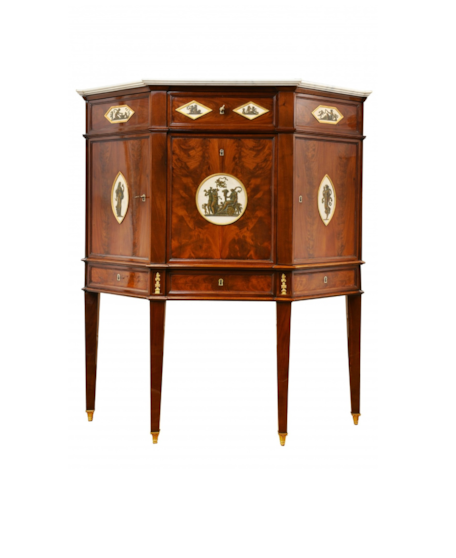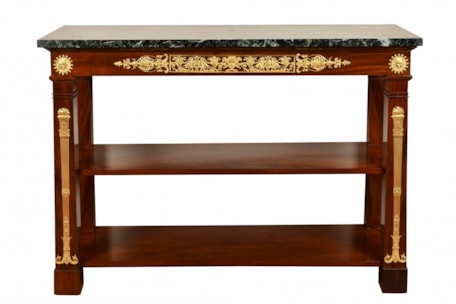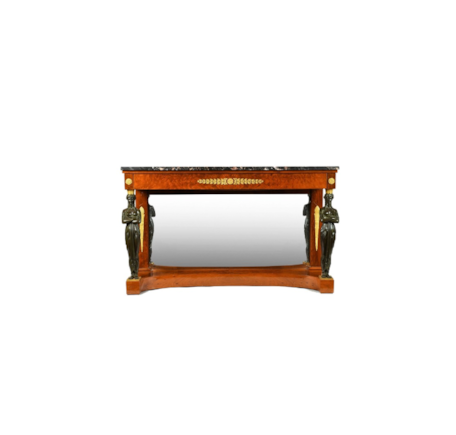




Exceptional Gueridon from the Directoire period, attributed to Molitor
Balte in mahogany, green patinated wood, partially gilded,
inlaid with brass and ebony, turquoise-blue marble top
turquoise
H: 75 cm x Diameter: 114.3 cm
A large Directoire period pedestal table in mahogany, the uprights in antique green and gilded eagle protuberances. The top band inlaid with brass and ebony, joined by a concave brace. Turquoise marble top.
Provenance: Philippe Perrin, Paris, June 2001.
Bernard Molitor (1755 - 17 November 1833) - cabinetmaker in Paris, mastered on 26 October 1787. Molitor quickly became one of the leading cabinet-makers in Paris and received orders from the Court from 1788. Thierry de Ville d'Avray, general commissioner of the Garde Meuble de la Couronne, was seduced by the austere elegance of his creations and was also keen to keep royal expenses down. A highly innovative designer, Molitor was a precursor of the Empire style and one of the main architects of the ‘Transition Louis XVI Empire’ style. From the end of the Louis XVI period, he heralded the Empire style by using busts of Egyptian women, ivy leaf motifs wrapped around detached columns and friezes of stylised palmettes or winged griffins on his refined furniture, which was adorned with bronzes and used extensively during the Empire.
At the forefront of design during the revolutionary period, he made it through without difficulty. In 1802, he transferred his workshops to rue Saint-Honoré, then, under the Empire, to boulevard de la Madeleine. Molitor continued his career until the Restoration, enjoying great success even though he did not receive any major commissions from the Emperor or the Court. He ended his life near Fontainebleau, where he died in 1833.



